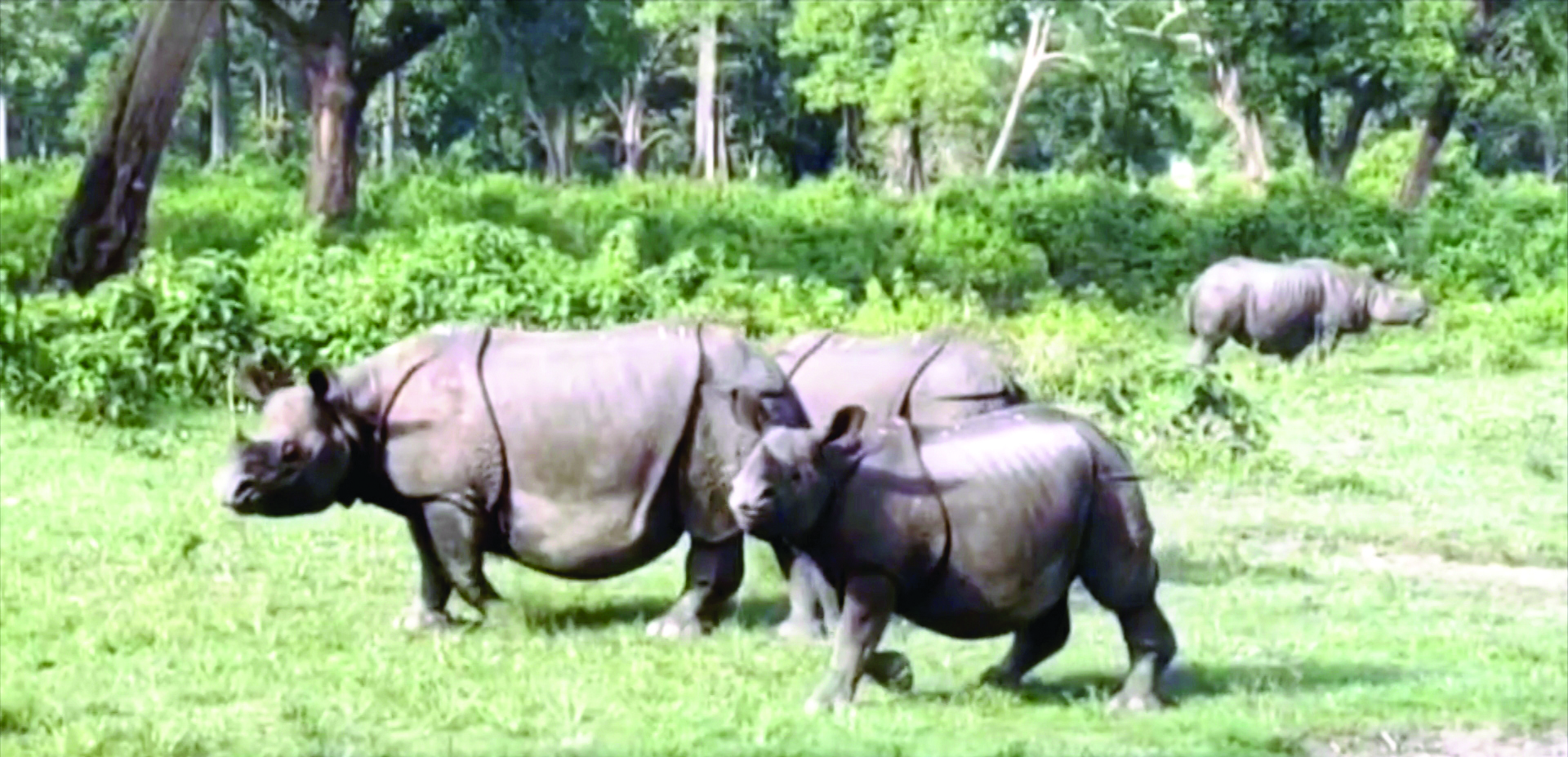
Annual floods become a boon for Jaldapara National Park
Don't Miss
MP | 20 July 2023 | Alipurduar: Although floods are a curse for everyone but for Jaldapara National Park, they are a blessing in disguise.
The rich silt brought in by the flood waters nourishes the forest every year thereby rejuvenating the rich flora and indirectly the fauna too.
The Jaldapara National Park is one of the most popular sanctuaries in the country, with the Torsa and Halong rivers flowing through. This time, with incessant rainfall, the water from the Torsa and Halong rivers has flooded Jaldapara.
According to the forest department, the rhinos require vast grasslands to thrive. Currently, Jaldapara boasts a record number of around 300 rhinos.
The forests of Dhada, Chepti, Malsa, and Madhua grasses are carefully maintained throughout the year.
Jaldapara currently has a little over 1,500 hectares of grassland, which not only sustains rhinos but also elephants, bison, and deer.
The sediment carried from Bhutan by the rivers during floods is rich in minerals, resulting in considerable silt accumulation that enhances the normal growth of grass.
Floodwaters standing in the grassland for two or three days also help in eliminating weeds that strangle the undergrowth.
“Floods are not welcome for most. However we welcome the floods with silt-laden monsoon water. Rivers like Torsa and Halong deposit more and more silt in Jaldapara, making our grasslands richer.
It takes time to grow an artificial grass forest but a silicified grassland grows much faster.
Jaldapara has already received enough silt from the flood this time but we need at least two more times of the same silt mixed water,” said Navojit Dey, ADFO, Jaldapara wildlife division.
At one point, the number of one-horned rhinos in Jaldapara National Park was as low as 10.
However, in the last 30 years, this number has increased to around 300, and the grasslands have played one of the most vital roles in this unprecedented event in the country’s wildlife conservation history.
Moreover, the natural habitat of the rhinoceros within the national park is quite good. Recently in July, the water level in the Torsa river increased, causing flooding in Jaldapara on the south side of Torsa and Chilapata on the east side.
The herd of wild animals then moved to the higher elevations of the national park. Once the water recedes, their normal movement resumes.
https://www.millenniumpost.in/big-stories/tmc-supporters-stream-into-kolkata-for-martyrs-day-rally-526408?infinitescroll=1



0 Response to "Annual floods become a boon for Jaldapara National Park "
Post a Comment
Disclaimer Note:
The views expressed in the articles published here are solely those of the author and do not necessarily reflect the official policy, position, or perspective of Kalimpong News or KalimNews. Kalimpong News and KalimNews disclaim all liability for the published or posted articles, news, and information and assume no responsibility for the accuracy or validity of the content.
Kalimpong News is a non-profit online news platform managed by KalimNews and operated under the Kalimpong Press Club.
Comment Policy:
We encourage respectful and constructive discussions. Please ensure decency while commenting and register with your email ID to participate.
Note: only a member of this blog may post a comment.